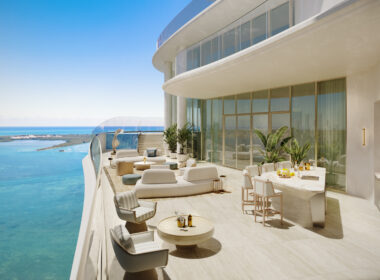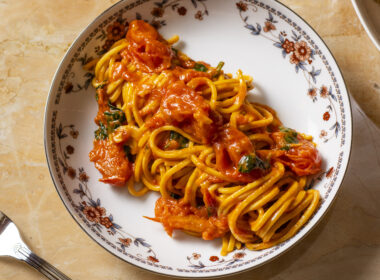Leku takes artistry beyond the Rubell
By Kylie Wang
It might be strange to find a fine dining establishment like Leku in an art museum in the heart of Allapattah, but that oddity is superseded by the wildly eccentric Rubell Museum, where it is located. Even the neighborhood of Allapattah is somewhat of a nonconformist alien in Miami, a working-class area west of the city which is aggressively striving to reinvent itself as the affordable rival of the Wynwood art district. Wynwood, once a gritty warehouse district known for its many galleries and hand-painted murals, has transformed itself into a hip hub for entrepreneurs and tech startups. Allapattah, however, is still off the beaten path, though considered “up and coming” thanks to the arrival of artists from Wynwood, the vast Rubell collection, and the uniquely immersive art museum Superblue.

All of this unconventionality, however, is tempered by the tranquility of the Rubell’s in-house restaurant Leku, which is full of greenery and contemporary but simple décor (excluding, of course, the mural above the bar – an eye-catching homage to the museum it calls home). It has a Basque-inspired menu you might not find ordinary, but certainly more mainstream – a welcome respite to the bemusement you might experience at a tour of the Rubell before dinner. And it is, quite simply, beautiful, easily combining indoor and outdoor seating with artful elegance.
Still, the most remarkable element of Leku is actually its chef, Carlos García, a Venezuelan educated in Spain who opened his first restaurant in Miami in 2017 (Obra Kitchen Table, which closed during the pandemic). His Caracas-based restaurant Alto, which he has co-owned since 2007, won the award for the Best Restaurant in Venezuela from “The World’s 50 Best” list, and he himself is highly rewarded. In April, he took the helm of Leku, bringing forth dishes like the tartar de remolacha (beet tartare) and an artichoke dish too long to name here that’s served with a sauce made from txakoli, a bone-dry white wine from the Basque region.

Though Leku is notable for its Basque grill, the centerpiece of the outdoor patio where wood-fired items are prepared, it’s Chef García’s vegetables that take center stage when it comes to flavor. The aforementioned beet tartare is exquisite, served with mini cones full of mushrooms that look like the end of an ice cream cone and provide an earthy, nutty flavor to an otherwise light and refreshing dish. Deceptively simple but vivaciously saporous, meanwhile, is the seasonal tomato and basil cracker. Served on what is, effectively, just an ordinary tortilla chip, and then loaded with tomato and basil, the dish is surprisingly vibrant and delicious, considered a favorite among Leku afficionados.
Ultimately though, what makes Leku special is its placement at the Rubell Museum, which is also conveniently across the street from Superblue. It’s the sort of place you might spend your day off in Miami (if you like art, that is), bringing along a spouse or business partner to drink in some culture between meetings.












